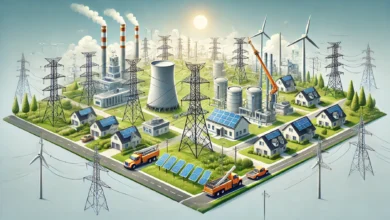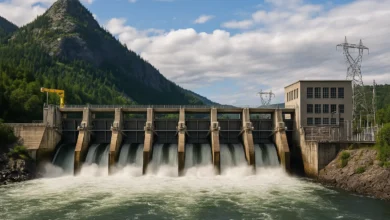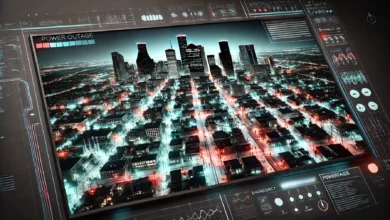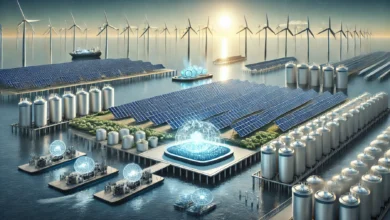The Hidden Costs of Non-Renewable Energy
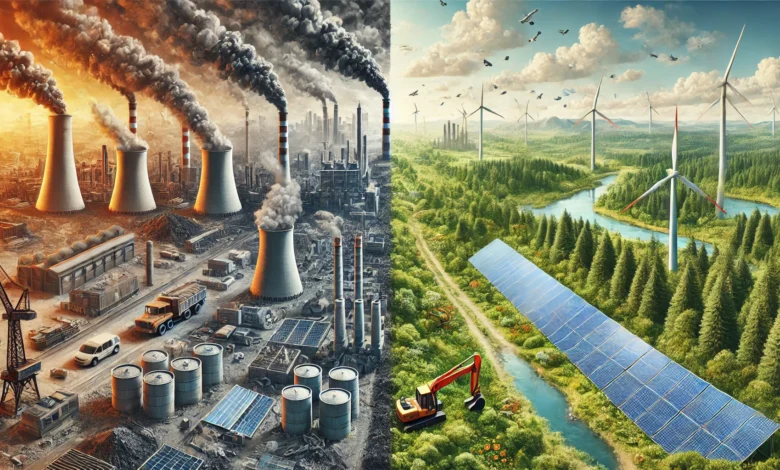
When we think of non-renewable energy sources such as coal, oil, and natural gas, the first thing that typically pops into our mind is their market price. But the actual cost of non-renewable energy goes far beyond the bill for the electricity we consume or gasoline powering our vehicles. The true cost of non-renewable energy has hidden costs – also known as externalities – which are the economic, health, and environmental damages or societal impacts that are not reflected in the price. Understanding hidden costs is a vital part of the evaluation of the future of global energy systems.
Contents
- 1 What are Hidden Costs?
- 2 Health Impacts of Non-Renewable Energy
- 3 Environmental Degradation
- 4 Acceleration of Climate Change
- 5 Economic Costs and Energy Security
- 6 The Value of Transition
- 7 Frequently Asked Questions (FAQ)
- 7.1 What are some examples of hidden costs in non-renewable energy?
- 7.2 How hidden costs affect electricity prices?
- 7.3 Are all renewables free of hidden costs?
- 7.4 What potential policy changes would be able to adopt to reduce hidden costs?
- 7.5 How can individuals reduce and/or be accountable for hidden costs?
What are Hidden Costs?
Hidden costs reflect indirect costs that are not paid for by the energy producer or user, but are instead paid for by society. These hidden costs include things like, health care costs resulting from pollution, remediation costs, degradation of ecosystem services, and costs with respect to climate change. Hidden costs are not included in typical economic accounting, but they will impact all of us today and future generations.
Health Impacts of Non-Renewable Energy
Burning fossil fuels results in gases such as sulfur dioxide, nitrogen oxides, and toxic metals and other particles into the atmosphere. The introduction of those gases is attributed to respiratory diseases, cardiovascular problems, and premature death. Studies estimate 8.7 billion people perish annually due to air pollution associated with fossil fuels.
- Asthma and Respiratory Problems: Children and older adults are especially susceptible to air pollution.
- Heart Disease: long-term exposure to air pollution increases the risk of heart disease.
- Cancer Risks: Most chemicals released from combustion of fossil fuels are carcinogenic.
Environmental Degradation
Energy extraction and consumption for non-renewable energy hurts the environment:
- Oil Spills: Ruin marine ecosystems for decades.
- Coal Mining: Creates land use and erosion.
- Natural Gas Extraction: Causes methane leaks, the most potent green house gas.
Most of these damages require extensive and expensive remediation that taxpayers pay; often, it is hard to tell if the responsible company goes bankrupt or attempts to avoid remediation altogether.
Acceleration of Climate Change
Among other factors, burning non-renewable energy sources is the number one contributor to greenhouse gas emissions and, therefore, the acceleration of climate change. When the earth warms, it receives the following changes:
- Increased frequency and severity of both weather events and natural disasters, such as hurricanes and wildfires.
- Sea level rise is likely to affect cities even within a generation.
- Loss of biodiversity due to changing ecosystems that are too slow to adapt.
For example, the economic impacts of climate change have reached exorbitant levels. In the U.S. alone, the natural disasters were over $145 billion dollars of economic harm in 2021.
Economic Costs and Energy Security
Non-renewable energy also detracts from a nation’s energy security as well as its reliance on economic control.
- Price Fluctuations: The price of fossil fuel can fluctuate wildly due to geopolitics.
- Dependence on Imports: A nation is vulnerable when their domestic economy is entirely dependent on foreign oil imports.
- Subsidy: with billions…of funded subsidies that are tacitly identifying hidden costs for the long-term.
The Value of Transition
Investment in limited-use energy sources, like solar and wind power can eliminate many of these hidden costs. Renewables do not only cut emissions, they create stable jobs while eliminating price fluctuations, and create healthier communities.
Frequently Asked Questions (FAQ)
Attributable health care costs due to pollution, profit losses from expensive environmental clean up costs, potential harms from climate change, and military spending to secure oil based supply chains.
Even when reported market costs for energy are low, the society pays substantially higher prices in costs such as healthcare, recovering from disasters, or environmental damages.
There is not an energy source with no downside, but in relation to fossil fuels, Renewables generally have lower associated external costs or third party costs for all stakeholders.
New policies for carbon-based pricing, elimination of fossil fuel subsidies, and a significant increase investment in renewable energy systems to clearly elucidate the ongoing cost of energy.
take the first sustainable option, make consumer decisions around sustainable-based companies, and publicly advocate for renewable energy policies locally and/or nationally.
Understanding that non-renewable energy provides hidden costs, is the first step into action toward building a cleaner, healthier, and more durable future by considering the energy sources we utilize today. The more developed this awareness is, the greater the replacement cost can be remedied by valuing the right energy in place.
